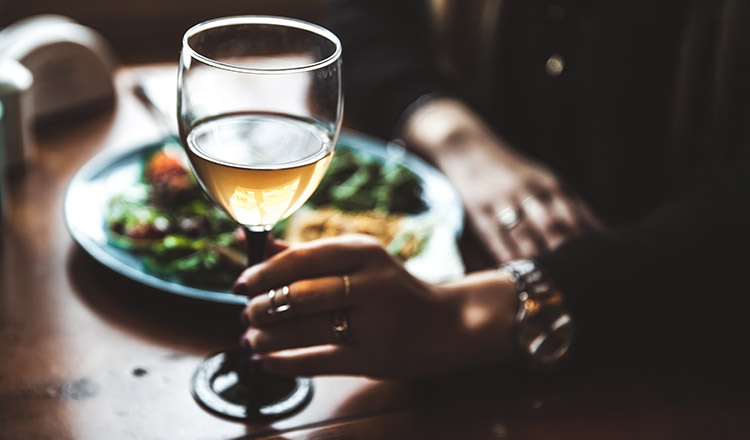For many of you, “cooking with wine” may mean holding a wooden spoon in one hand and a wine glass in the other. While there’s nothing wrong with enjoying a glass while you cook, I’d like to propose reserving a little for your recipes.
You may ask, “Why use wine in my dishes when there are all sorts of other liquids available?” Well, water and stock work fine most of the time, but certain recipes just wouldn’t be the same without the addition of wine. If you’ve ever sampled savory Boeuf Bourgignon or velvety sabayon, you know what I mean.
IT’S ABOUT FLAVOR
It could be argued that everything you do in preparing a recipe is for flavor anyway, but sometimes the wine is an ingredient used only for its flavor profile and what it will add to the dish. So without being highfalutin about “aromas of crushed violets and pickle juice” or any such thing, let’s go over the basic flavors present in most wines and how they affect food.
Sour
Grapes have a range of acids in them, mostly tartaric and malic, and it’s this acidity in wine that can help to “brighten” up the flavor of a dish. Just think about squeezing a lemon wedge onto fried calamari and you’ll understand. When you reduce either the wine or the sauce it’s in by boiling or simmering, you will be concentrating the sourness as well, so be mindful of how far you reduce a sauce after adding the wine…it can easily become unpleasantly sour.
Sweet
Wine starts out as grape juice, and grape juice is sweet as well as sour. Although “dry” wine is supposed to have no sugar in it, all wines have some residual sugar because some sugars are not fermentable. So, most wine has at least 1 gram of sugar per liter, which reads as 1 g/l. Most people won’t notice sweetness until the sugar level goes above 2–3 g/l, and truly sweet dessert wines usually have more than 40 g/l of residual sugar.
Most dishes that use wine assume the use of a dry wine in the hope that the acidity and aromatics will balance and enhance the richness and other flavors in the food. To this end, you should always try to use cooking wine that has very low residual sugar because as you reduce a sauce, the sugar becomes more concentrated. A lot of the inexpensive jug and bag-in-a-box wines made in the U.S. have high residual sugar. As you reduce these wines, you might even end up with something resembling caramel—not a balanced sauce—so choose your cooking wines wisely.
Aromatics
Whether you use white or red wine, there are thousands of different smells that they might have. White wines tend toward the aromas of citrus, apples, and tropical fruit; red wines often smell like red fruits such as cherries, plums, and strawberries. These smells are very important when judging the wine on its own, but not as much when cooking with it. Frankly, the flavors of the other ingredients in the dish can—even should—dominate and the wine should merely accent, enhance, or balance those flavors.
With this in mind, it bears mentioning that the wine you cook with needs to be of a good enough quality that you would drink it. I do not, however, believe that you have to use the same quality as the wine that’s going to be served with the dish. In fact, if you poured a bottle of Clos Vougeot into the stew pot, I would start weeping quietly. But, you should still use a decent bottle of Bourgogne Rouge, maybe even from the same producer as the expensive Burgundy you’re serving with the dish.
A BIT OF CHEMISTRY
Let’s touch on just one of many ways chemistry affects cooking with wine to perhaps keep something unpleasant (flavor-wise) from happening. One of the requisite “ingredients” in red wine is tannin. It is actually a family of highly complex phenolic compounds that are astringent—that make your mouth feel dry because they bind with the proteins in your saliva. These tannins are in more plants than just grapes, but are an important component in red wine. Now, if you just reduce red wine into a sauce, the tannins will become more concentrated and even less pleasant than they were to begin with. There are two ways to mitigate this. One is to choose a red wine with less tannin at the outset, like a Pinot Noir or Gamay. Or (and this is where it gets tricky), you can include some form of protein in the sauce or dish, and the tannins will bind to that protein before it gets into your mouth. This is why milk makes strong tea less astringent—the tannins bind with the milk proteins. A little ground meat, or egg, or the chuck roast in the pot will keep the tannins busy. So use the power of chemistry for good rather than evil.
John Fischer is a professor in hospitality and service management at the CIA in Hyde Park, NY and a 1988 graduate of the college.


